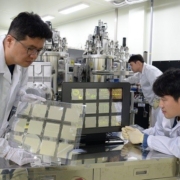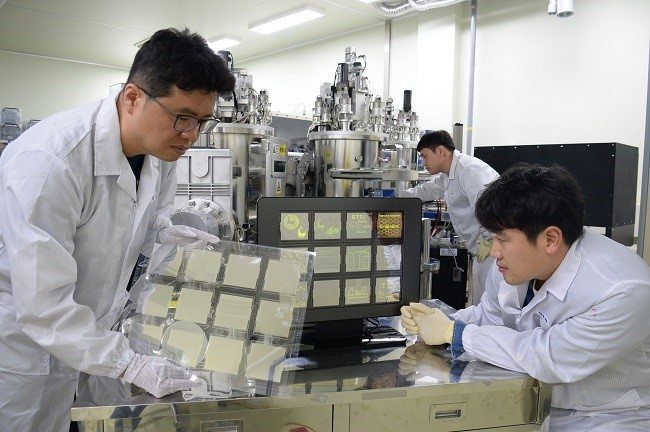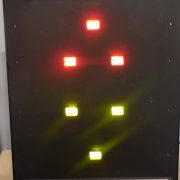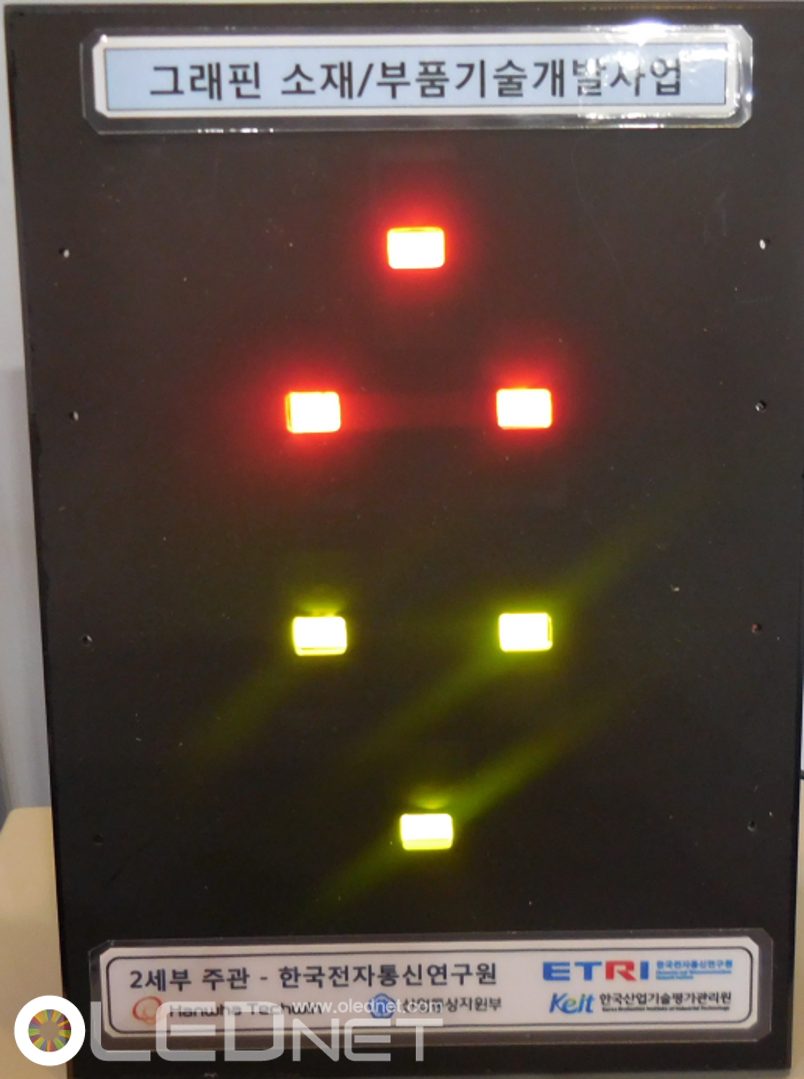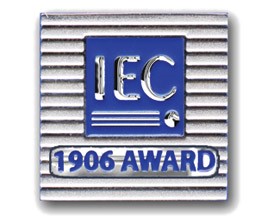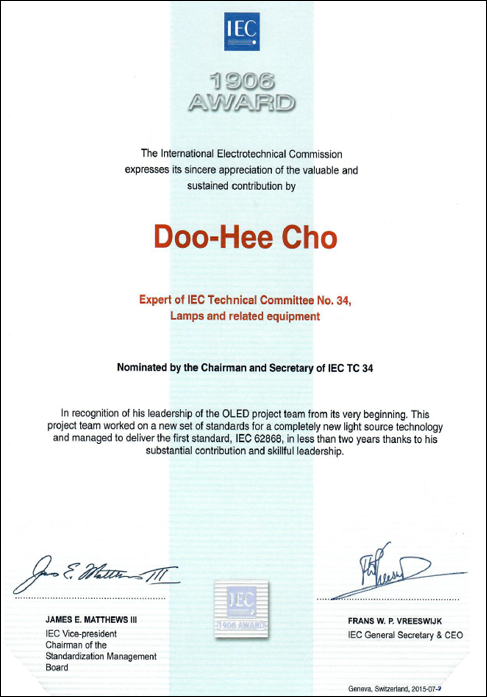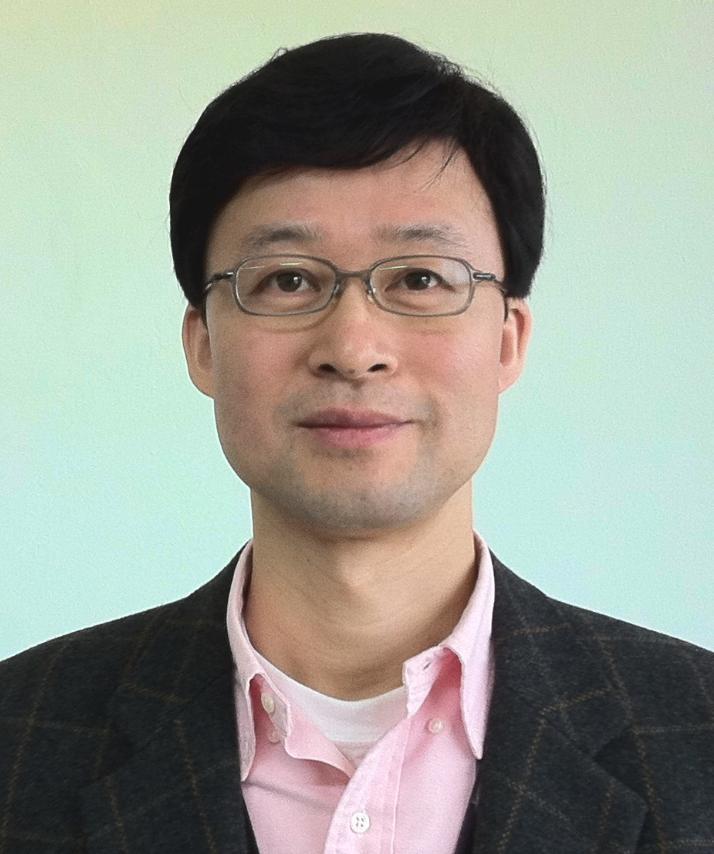By Choong Hoon Yi
Korean research team is expected to greatly improve display’s transmittance and picture quality through fusing graphene technology, focus of much attention as the new material to OLED technology.
On December 15, ETRI (Electronics and Telecommunications Research Institute) replaced the thin metal electrode that was used as transparent electrode on top of the OLED substrate with graphene transparent electrode, and succeeded in developing original technology that is conductive and transparent.
This research results were presented in Scientific Reports, a journal from the publishers of Nature on December 2.
The metal electrode used in OLED until now has been mostly silver material, but due to the reflection of internal light, the viewing angle changed depending on the angle. The external light also affected picture quality due to reflection.
In order to solve this problem, ETRI research team focused on graphene that mostly does not reflect internal/external light. By replacing the material, the team reported that the transmittance increased by approximately 40% and reflectance improved by approximately 60%.
OLED was successfully lighted by attaching graphene transparent electrode to the organic layer on top of the film form (23 x 23 mm, 30 ㎛ thickness) of substrate. The research team believes this will be able to contribute much when applied to transparent OLED display and white OLED-based large area OLED display in future.
Particularly, unlike the existing vacuum process OLED production method, this technology can be employed via lamination where film is attached to the organic layer and graphene. Therefore, OLED can be produced through simpler process. It is expected that this can be evolved into production technology using roll to roll process.
Additionally, ETRI, together with Hanwha Techwin, is working on applying graphene transparent electrode to OLED’s lower electrode through collaboration of high quality graphene thin film electrode materials. The related technology development results were published online by The IEEE (Institute of Electrical and Electronics Engineers) of Selected Topics in Quantum Electronics.
ETRI’s Dr. Jeong-Ik Lee (soft I/O interface research section) anticipated that “this technology will be able to play a role in widening the gap with latecomer countries in OLED industry where challenging latecomers are strong”.
This research was carried out through Korea’s Ministry of Science, ICT and Future Planning and Institute for Information & Communications Technology Promotion (IITP)’s “Energy reducing environment adapting I/O platform technology development for future advertisement service” project and Ministry of Trade, Industry and Energy and Korea Evaluation Institute of Industrial Technology’s “Substrate size 5.5 generation or larger graphene film and OLED device/panel foundation and application technology development for graphene materials OLED transparent electrode and thin film encapsulation application”.
ETRI is planning to additionally develop sheet tension reducing technology by manufacturing metal in thin, grid forms and enlargement technology to produce mobile display size within 2016.
Through this technology, the research team produced 6 international patent applications and 6 papers. ETRI is intending to transfer the technology to graphene film and display panel companies among others. Commercialization is estimated to begin after 3 years.
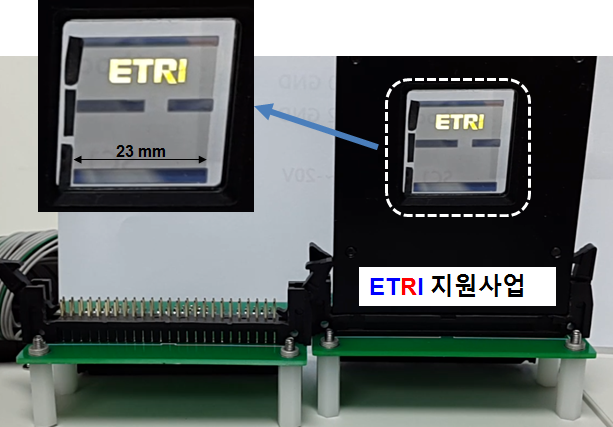
1. Graphene transparent electrode applied lit OLED
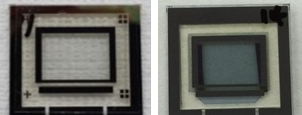
2. OLED with existing thin metal electrode and graphene electrode OLED comparison (Left: Graphene, Right: Thin Metal, Ag)
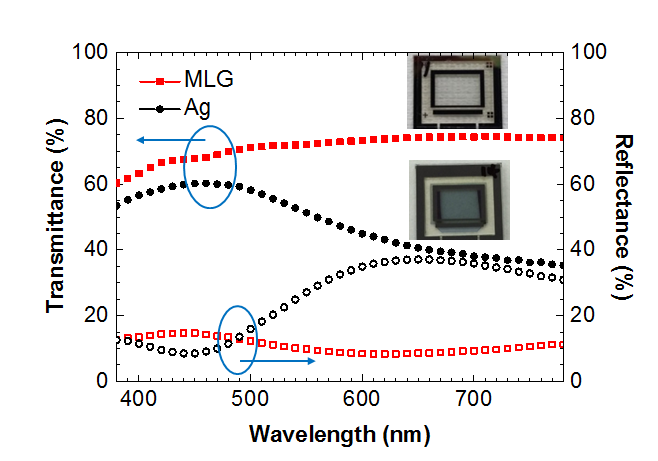
3. Comparison graph of existing thin metal electrode OLED and graphene electrode OLED

4. Film including graphene transparent electrode applied to lamination process using OLED production
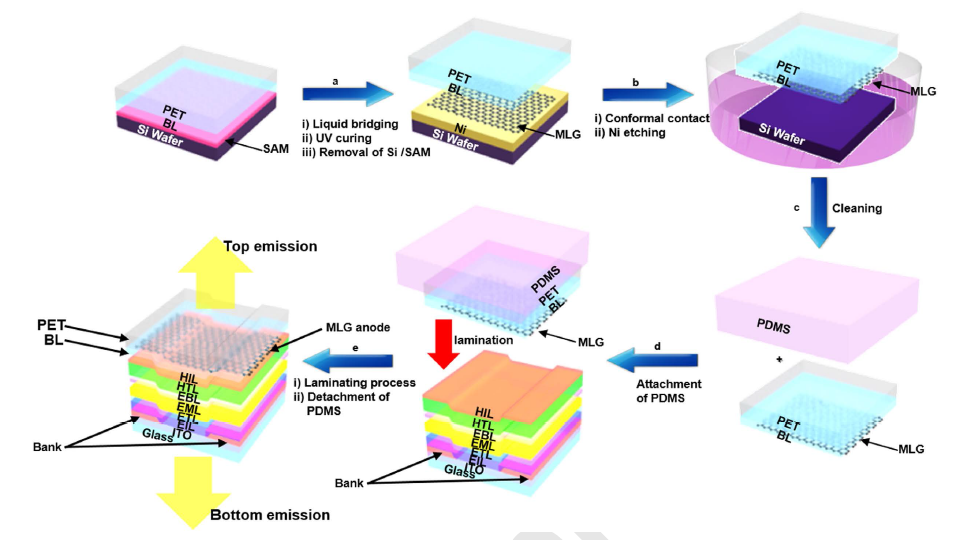
5. Graphene transparent electrode OLED Production Process
[Process Explanation]
After manufacturing laminated film, formed with bonding layer (BL) and PET film, using surface treated substrate, graphene transparent electrode is transferred on to the bonding layer. By laminating the laminated film that includes graphene transparent electrode on the substrate (lower electrode and organic layer), OLED where graphene transparent electrode is used as upper electrode is complete.
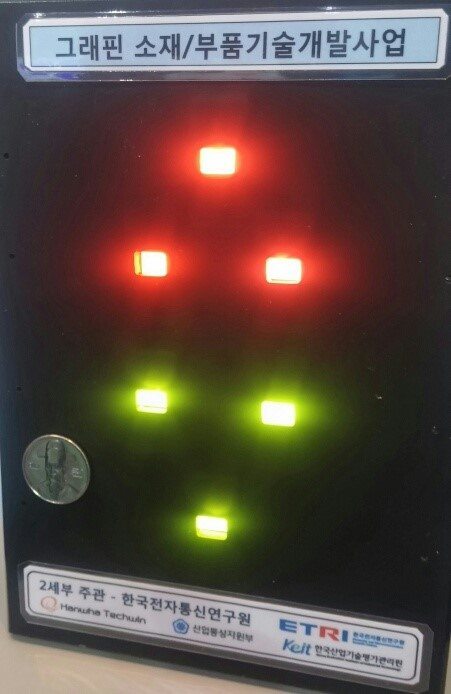
6. Graphene OLED of diverse colors
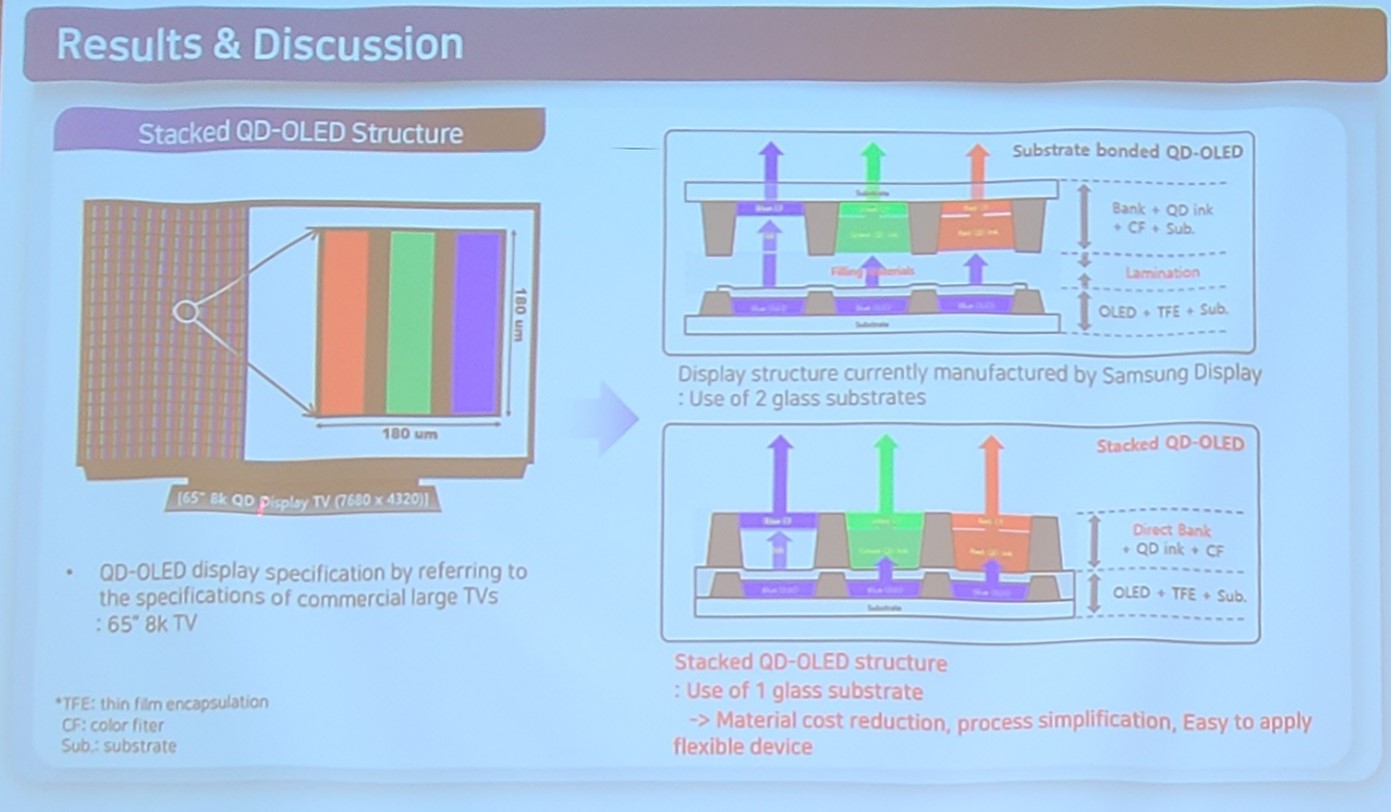
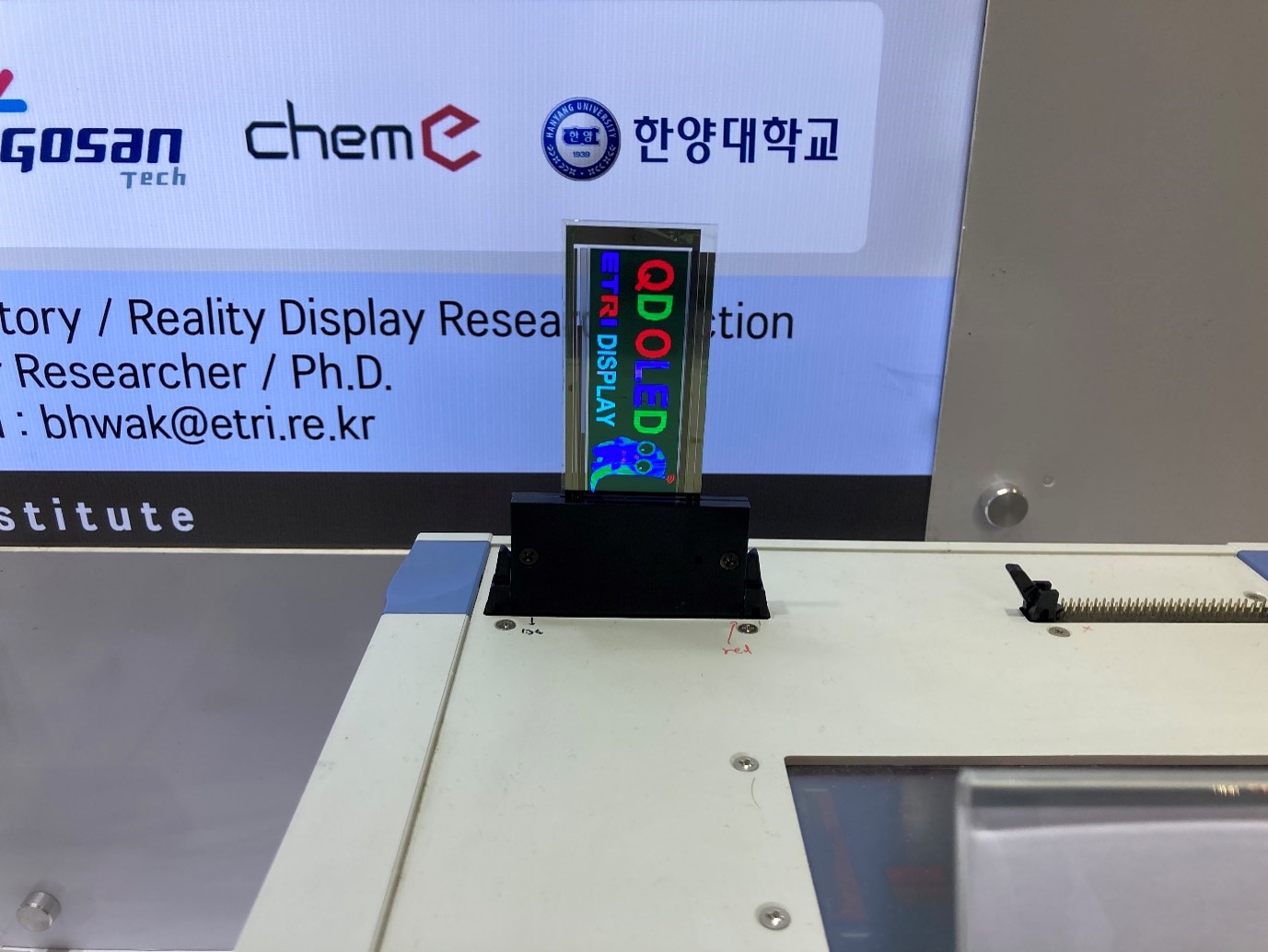

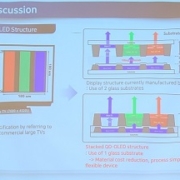
 OLED Display Report Sample Download
OLED Display Report Sample Download